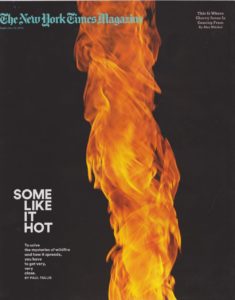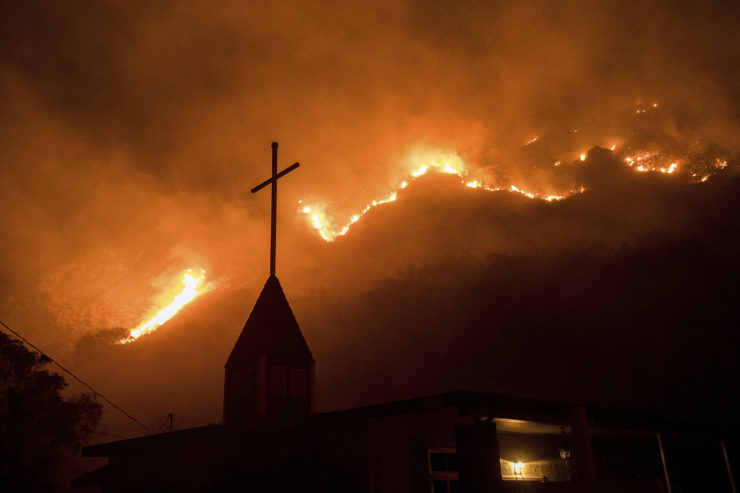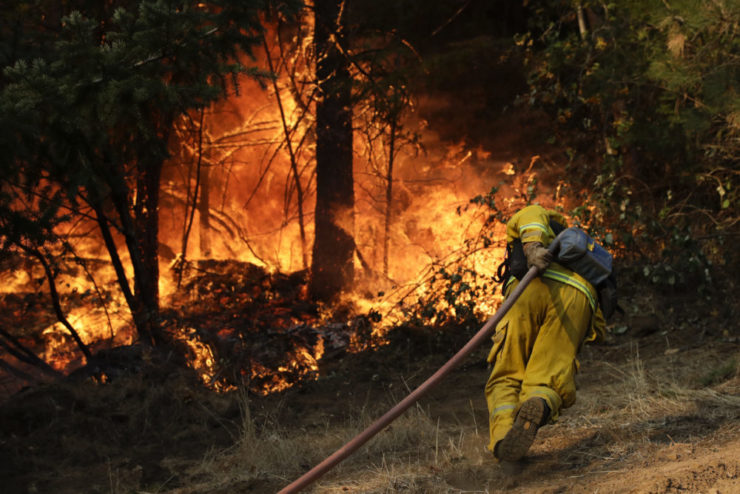Recession, shuttered publications, the rise of online media — Paul Tullis has weathered it all as a freelancer for the better part of 24 years. What hasn’t changed: Story idea is king. What has, in Tullis’ view, is the level of pre-reporting editors expect in pitches. “You have to almost write the 750-word version of 4,500-word story. I think that’s kind of unfortunate, because it makes it difficult for new voices to get in,” he says.
The stories Tullis pitches often explore the gaps between research and policy when it comes to science and the environment. He’s also covered everything from education to business to parenting for Bloomberg Businessweek, Time, Scientific American and many others. He was a contributing writer for The New York Times Magazine from 2013 to 2014.
The Pitch
In an occasional series, Storyboard examines the elusive art of the story pitch. We talk to writers and editors about their tips, tricks and pet peeves, and annotate some real pitches.
Tullis has also seen pitching from the other side, serving as an editor for TakePart, Plenty, Men’s Journal and Seed.
I talked with him about his process and his query for what became “Into The Wildfire,” a feature in The New York Times Magazine. Our conversation has been edited for length and clarity.

What did your “contributing writer” role at The New York Times Magazine entail?
It meant I had a kick-ass title, and my name was in the magazine every week. These days, it’s hard to get important people to talk to you without an assignment unless you have a title. I was expected to write a certain number of words spread across five stories in a year, and the fee was almost six figures.
Jason Fagone, whom I interviewed for the first piece in this series, swears by short pitches. What do you recommend?
Mine are definitely on the long side, probably too long in some instances. I have sold narrative feature pitches in two sentences, but it’s rare. It makes sense to say if you can’t get your idea across in three paragraphs, you need to work on your idea. That said, if it’s an obscure topic, you might need a paragraph just of background to let people know it’s actually important. Anything more than five paragraphs, and you’re pushing the editor’s patience and showing you might have a problem writing concisely. That’s not necessarily true when you have a lot of good clips.
How many pitches do you usually have going at once? How long does it take you to go from the germ of an idea to an assignment?
The ideal situation is to be working on a couple of pitches, reporting a story, writing a story and closing a story at the same time. That almost never happens. I usually have three or four feature pitches going simultaneously. I’ve never had the problem of suddenly having too many assignments. If you don’t have an assignment after two months of pitching a story, you should probably give up. Generally, if you pitch four or five places and have been turned down, you should probably think about finding another story idea.
How long do you wait to hear back? How do you feel about simultaneous submissions?
I’ll generally give the first person I pitch two weeks. If they haven’t gotten back to me, I’ll follow up. If there’s time pressure, like a reporting opportunity is in three weeks, that goes out the window and I’ll pitch to a bunch of people simultaneously. When I was an editor, I didn’t mind receiving simultaneous pitches. Supposedly there’s a big taboo around it, but I don’t understand why. It’s criminal that magazines work that way. Books, music and screenplays don’t work that way.
When you were an editor, what was one of your pet peeves?
I didn’t like when someone pitched me a story I did three months ago. It’s pretty easy to see if the publication has covered that issue in a feature recently. Depending on the topic, even two years ago might be too soon. One of stories I’m doing now is very specific and obscure. The New Yorker did a similar story 10 years ago, so I wouldn’t pitch it to them.

***
My questions are in red, his responses in blue.
Every summer in the west, wildfires cause hundreds of millions of dollars of damage: 2009, California: an area the size of 9 Manhattans burned, $125m. 2010, Colorado: $210m. 2011, Texas: 5500 homes and buildings. 2012, Colorado again: $352m. The Dept. of Agriculture spends $2.2 billion every year on fire prevention and suppression, and the Forest Service's fire plan budget has quadrupled since 2000. Why did you decide to open with numbers rather than a character or the news hook?Generally, it’s sound to start with anecdotal lede, but it depends on the magazine and the story. I've found that editors on the East Coast don't have as complete an understanding of environmental issues in the West. I thought it was a good idea in this case to start with what's at stake: This wildfire thing is a big fucking deal even though it never touches you. Don't just trust me—here are some numbers. Anecdotal ledes can be a little precious. The danger is that you're unable to convey why the topic is important other than that it's a dramatic story for this one person.
Fire managers across the West--tasked with coordinating firefighting efforts based on empirical research, local conditions, and often simply their own experience and gut feelings--say these fires are acting in ways they've never seen before: slow-moving burns that grow at will and resist all known containment efforts--often without being fed by any significant wind. These big changes in fire behavior are occurring just in the last several years, and though climate change is the chief suspect, they don't really know what's causing it. Humidity remaining low overnight in zones bordering active fires could be a factor, as it certainly didn't used to be the case.
US Forest Service researchers can't do anything about the weather, but what they can do is learn how fire spreads using new technology and the laws of physics. Previous models of fire behavior are all based on empirical data, so fire managers have been forced to just extrapolate from what they've seen before onto the new, extreme conditions. A scientific approach, though, can extend beyond the range of data at hand; the laws of physics are constant. So in a lab in Missoula, MT, Mark Finney and colleagues are creating different uniform conditions of the new, climate-change-altered western forests and setting them on fire to understand how the new superfires spread. Finney has a full machine shop to build custom equipment--apparatuses for experiments on convection and radiation as heat transfer mechanisms. They put the fuel in a chamber, create the weather conditions they want to replicate, and use the machines they've built to spread heat and fire in various ways.
I asked Finney if he's finding out anything that's different from what they thought. "Everything is different from what we thought," he said. "People have no idea how fire actually spreads." This is the quote that probably sold the pitch.Grasses and pine needles, for example, won't light by radiation--they have to be ignited by contact. "That is absolutely contrary to the models people have long adhered to," Finney said.
Fire ecologists, meanwhile, are examining different landscapes across the West to see which are most susceptible to getting out of control. They're advocating for not fighting some of the fires in less-susceptible areas and under non-extreme conditions: less-severefires destroy "ladder fuels" which, if they burn when it's hot and dry, spread to the bigger trees and cause a fire to get out of control. With results of Finney's experiments in hand, the theory goes, they should be able to allow only non-severe fires to burn, and keep them contained.
Giny Chandler doesn't want to hear any of that. She's the chief counsel for CalFire, the California agency that fights wildfires. With the wild-urban interface spreading in California (and elsewhere), a change in wind direction can send one of these less-severe fires toward populated areas, and that can mean damages, deaths and lawsuits. CalFire's no-fire, no-how approach butts up against the ecologists' theory, and while it may protect some homes in the short term, it's probably contributing to bigger fires in the long term. Once I met Chandler, I knew I was ready to pitch the story. I had heard that we should be letting more fires burn, and then Chandler told me, “Oh no, we put out every fire as soon as we can because we can’t risk the liability.” Then I knew we had the tension that was going to drive the story: Data and policy were misaligned. Living at the edge of civilization, with wild, undeveloped territory your backyard--recreating, essentially, the iconic frontier days except with all modern conveniences--is an attraction to hundreds of thousands from San Diego to Sun Valley. Choosing a fire fighting policy, it seems, will either doom many of these homesteads to conflagration, or force owners to uproot and turn back. Already, fire insurance in these areas of California--from Laurel Canyon to the Berkeley Hills--is subsidized by the state; no insurance company will take on the enormous risk, whatever the premium.
As one of the thousands of evacuees from the 1991 Oakland fire, which killed 26 and torched 3800 homes at a cost of $1.5 billion, I know first-hand the chaos that ensues and how lives are ruined when drought, flame and sprawl mix. How important is it to bring in your personal experience, and what were you trying to convey?I don’t think it’s always that important. I wanted to say that I’ve been a part of this drama, so I know that this isn’t just a story about policy and physics. This is a story about human life and treasured memories and possessions.
I'll be the first to report from Finney's lab, and I'll spend a day in Sacramento and Davis, CA to talk to Chandler and the fire ecologists who disagree with her. Then, when a major fire strikes the west this summer, as it's certain to do, I'll look over the shoulder of fire managers to see what they're doing, and how Finney's research might help. Do you include a reporting plan for every pitch? What if there were no fires?There’s no way that was going to happen. The fires happen every year—it’s just a fact of life. I think it’s a good idea to include a plan. In this case, I ended up getting invited by one of the forest science researchers on a walking tour of the site of a fire that happened the previous summer. This scene illustrated the conflicts much better than the live fire I reported from. I'll have all the other elements in place before then so we can run a piece with stunning visuals from the fire and Finney's shop while the news is still fresh, pushing the story forward with exclusive coverage of the research efforts to prevent the next fire disaster. Do you always speak to the visuals and editorial calendar? I think it helps to give a news peg, for them and for you. I’ve had a story sit around for six months, since a story without a peg becomes easy to push from the schedule. It shows that you’re thinking like an editor. I would never pitch a photographer, because they like to make their own decisions about that, but it can’t hurt to remind them: “This is about fire, and fire is pretty to look at, even as it's scary as hell.”
Have you been thinking of revisiting this issue with wildfires in the news? I’ve never understood how to do a follow-up story. I just don't think like that. I get the sense that people are well-informed about issues around fire now, but maybe it's like you buy a purple car and it seems like everyone has one.



